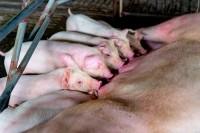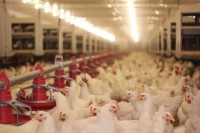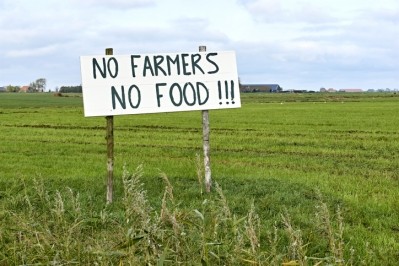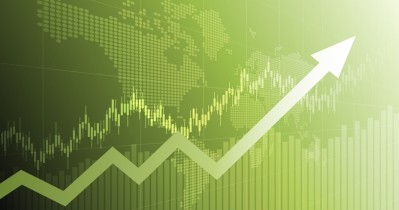Profits plunge for ForFarmers in tough trading conditions in 2019
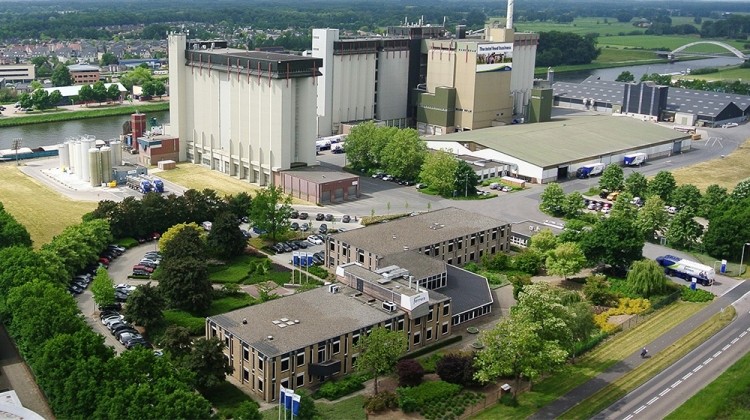
In its FY 2019 financial results, posted today, the Dutch company reported that its underlying EBITDA was down 11.6% to €88.5m, its underlying earnings per share were down 36.2% to €0.37 and its net profit was down by 69.8% to €17.7m.
The results of the first half-year of 2019 had an unfavorable purchasing position, which was not passed onto customers, resulting in a substantial negative impact on gross profit, underlying EBITDA and net profit, said ForFarmers.
“We have since further tightened our purchasing procedure in order to minimize the chances of such a risk recurring,” said the CEO, Yoram Knoop.
In addition, in the first half of the year, like-for-like volumes declined for the first time in many years, especially in the Netherlands, Belgium and the UK, it said.
In March 2019, the company announced efficiency plans to cut costs, with mill closures seen in the second half-year, in the Netherlands, the UK and Belgium. In the second half of 2019, ForFarmers saw volumes further like-for-like decline.
“In the second half of 2019, we realized better results despite further like-for-like volume decline due to challenging market circumstances in all countries except for Poland. This was, among other things, due to the implementation of our efficiency plans, which included the closure of five mills. We are well on track with the realization of the earlier announced €10m cost saving in 2021, compared to 2018,” commented the CEO.
Public debate on impact of agriculture, animal disease outbreaks
Developments in the markets ForFarmers is active in are placing huge pressure on the business. They include the fact that there is growing public debate in Northwest Europe about the environmental impact of agricultural, in general, with discussions about reducing nitrogen emissions from livestock farming causing uncertainty in the Netherlands, in particular.
The measures which may be imposed by the government in relation to these emissions could eventually lead to a reduction in the livestock population, said the company.
“Although the government declared that it was not a goal in itself to reduce livestock numbers, it has become clear that the proposed measures will, in due course, definitely lead to a small decline in animal numbers,” noted Knoop.
ForFarmers comments: "In Northwest Europe, there is increasing social and political pressure on the agricultural sector due to the impact of livestock farming on the environment and an increasing focus on animal welfare, and this is making livestock farmers more reluctant to invest in expanding their herds. Moreover, investments are needed in order to comply with the environmental measures imposed. The challenge of finding suitable successors and the growing financial pressure is fueling consolidation of farming businesses, which in turn is leading to changing client needs and requirements."
The outbreak of animal diseases, including African swine fever (ASF), which was detected among wild boars in Belgium and now in western Poland, not far from the German border, is another cause for concern, said ForFarmers. In addition, highly pathogenic bird flu has been detected in Poland, it added.
Another development causing uncertainty is that in all countries where ForFarmers is active, except Poland, markets are seeing growing overcapacity and increasing competition because of declining volumes, noted the feed compounder.
However, it expects to continue the trend of the second half-year of 2019 in 2020. It anticipates that the impact of the expected like-for-like volume decline in all countries except in Poland can be offset by further implementation of the efficiency plans and an improvement of the product mix. It said it expects such a strategy will have a positive impact on the improvement of the result in the first half of 2020.
“These are turbulent times and a new market reality is appearing rapidly. By implementing strategy Horizon 2020 in the past years, we have positioned ourselves stronger in four countries and made a successful start in the growth market Poland as fifth country of operation.
“Our market positions and our scale form a solid base from which we can continue to create value for our stakeholders in the current new reality. We will be announcing the strategy for the years 2020 to 2025 on May 12, 2020,” said the CEO.
ForFarmers on long-term farming outlook
The long-term global outlook for the ruminant sector remains positive, according to ForFarmers.
Internal consumption of dairy products and meat in Northwest Europe is stabilizing and production volume must therefore become more export focused but prosperity is increasing in Eastern Europe and this is also boosting local demand for dairy products and meat, it said.
Pig sector
The outbreak of AFS in China and other Asian countries is having a significant impact on European pig prices, it added. Production growth in the swine sector in Europe is expected to be limited due to uncertainty surrounding the post-Brexit trade agreements, US-China trade tensions and worries over further swine fever outbreaks, it noted.
The ASF threat in certain parts of Europe is making farmers reluctant to scale up their production.
In the Netherlands, the pig population is expected to shrink in the next two years as a result of a subsidy scheme aimed at buying out pig farmers in order to reduce odor nuisance in certain livestock-rich areas, said ForFarmers. The impact this will have on pig herds depends on the decision taken by pig farmers in spring on whether they will stop or continue their farming business, said the feed group.
Poultry sector
The poultry sector is growing as a result of the fact that consumers are increasingly opting for chicken meat and eggs as an alternative to other sources of animal protein, it reported. In addition, demand for poultry products from China and other Asian countries has increased due to the shortage of pork, it said. In Northwest Europe, there is growing local demand for animal welfare concepts such as free range and organic poultry. Furthermore, conventional production for export continues to grow, especially in Poland, it said.
At the start of this year, highly pathogenic avian influenza was detected among wild birds in Poland, with hygiene protocols introduced to prevent spreading. A number of countries outside Europe have imposed an import ban on poultry from Poland, putting pressure on broiler prices. Consequently, it is expected that growth will temporarily slow down. The situation is being closely monitored, said ForFarmers.
Slaughter capacity in Poland is set to grow in the coming years. This is expected to boost demand for compound feed in the poultry sector. With the new factory in Pionki, ForFarmers said it has the capacity to meet the growing demand.
It expects that, in the first quarter of 2020, poultry production in Belgium will reach levels equal to before the outbreak of low pathogenic avian flu in 2019.
Alternative proteins
Global demand for animal protein continues to increase on the back of a growing world population and increasing prosperity, it said.
While overall consumption of animal proteins remains stable in Europe, interest in alternative protein sources is noticeably on the rise. Volume growth will most likely be driven by export growth. In 2020 the Dutch agricultural sector will still be faced with the effects of the nitrogen issue, said ForFarmers.
Expectations are that the dairy herds in the Netherlands will not grow in 2020, it said, taking into consideration the measures which were announced in February 2020 to reduce nitrogen emissions.
